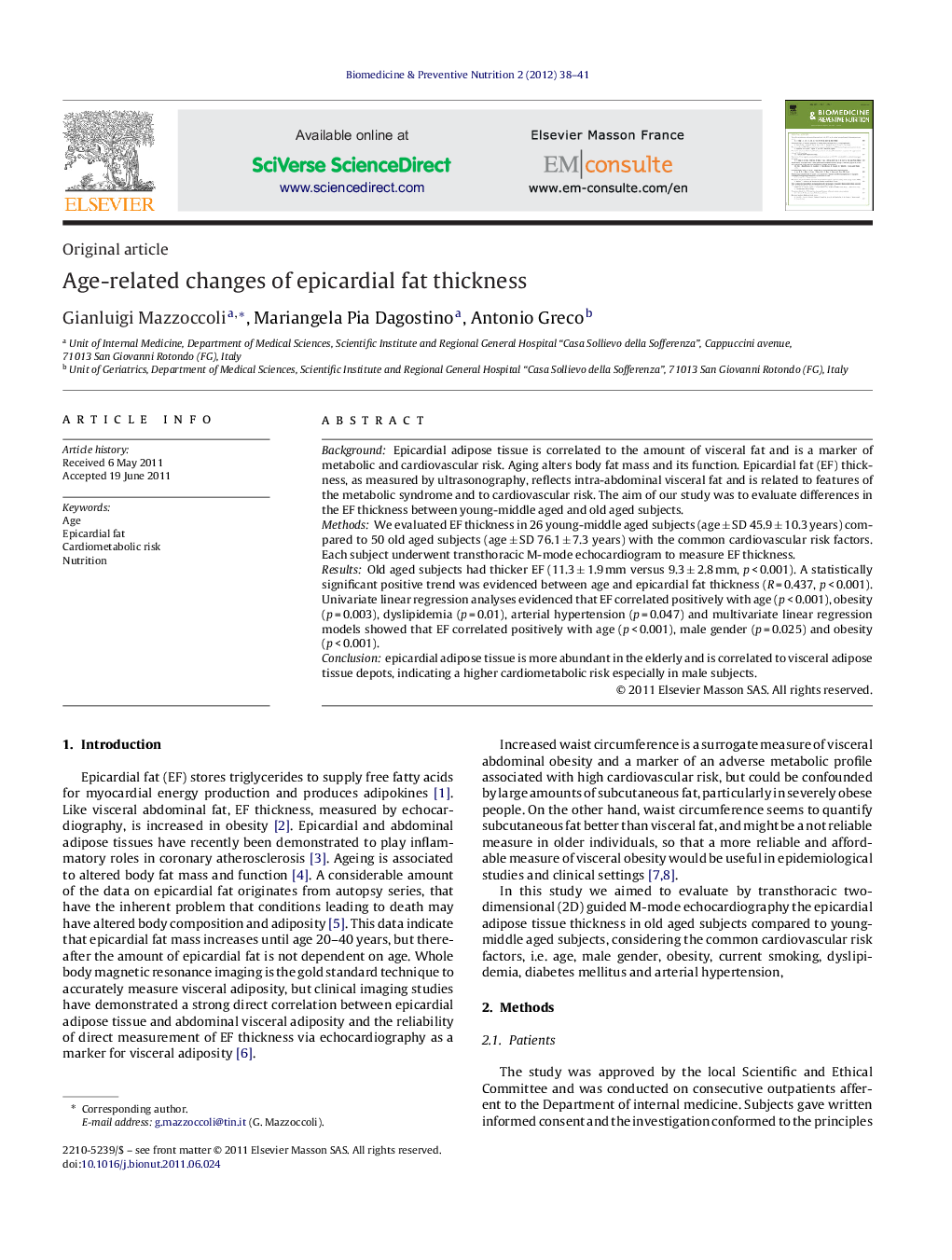| Article ID | Journal | Published Year | Pages | File Type |
|---|---|---|---|---|
| 2683718 | Biomedicine & Preventive Nutrition | 2012 | 4 Pages |
BackgroundEpicardial adipose tissue is correlated to the amount of visceral fat and is a marker of metabolic and cardiovascular risk. Aging alters body fat mass and its function. Epicardial fat (EF) thickness, as measured by ultrasonography, reflects intra-abdominal visceral fat and is related to features of the metabolic syndrome and to cardiovascular risk. The aim of our study was to evaluate differences in the EF thickness between young-middle aged and old aged subjects.MethodsWe evaluated EF thickness in 26 young-middle aged subjects (age ± SD 45.9 ± 10.3 years) compared to 50 old aged subjects (age ± SD 76.1 ± 7.3 years) with the common cardiovascular risk factors. Each subject underwent transthoracic M-mode echocardiogram to measure EF thickness.ResultsOld aged subjects had thicker EF (11.3 ± 1.9 mm versus 9.3 ± 2.8 mm, p < 0.001). A statistically significant positive trend was evidenced between age and epicardial fat thickness (R = 0.437, p < 0.001). Univariate linear regression analyses evidenced that EF correlated positively with age (p < 0.001), obesity (p = 0.003), dyslipidemia (p = 0.01), arterial hypertension (p = 0.047) and multivariate linear regression models showed that EF correlated positively with age (p < 0.001), male gender (p = 0.025) and obesity (p < 0.001).Conclusionepicardial adipose tissue is more abundant in the elderly and is correlated to visceral adipose tissue depots, indicating a higher cardiometabolic risk especially in male subjects.
